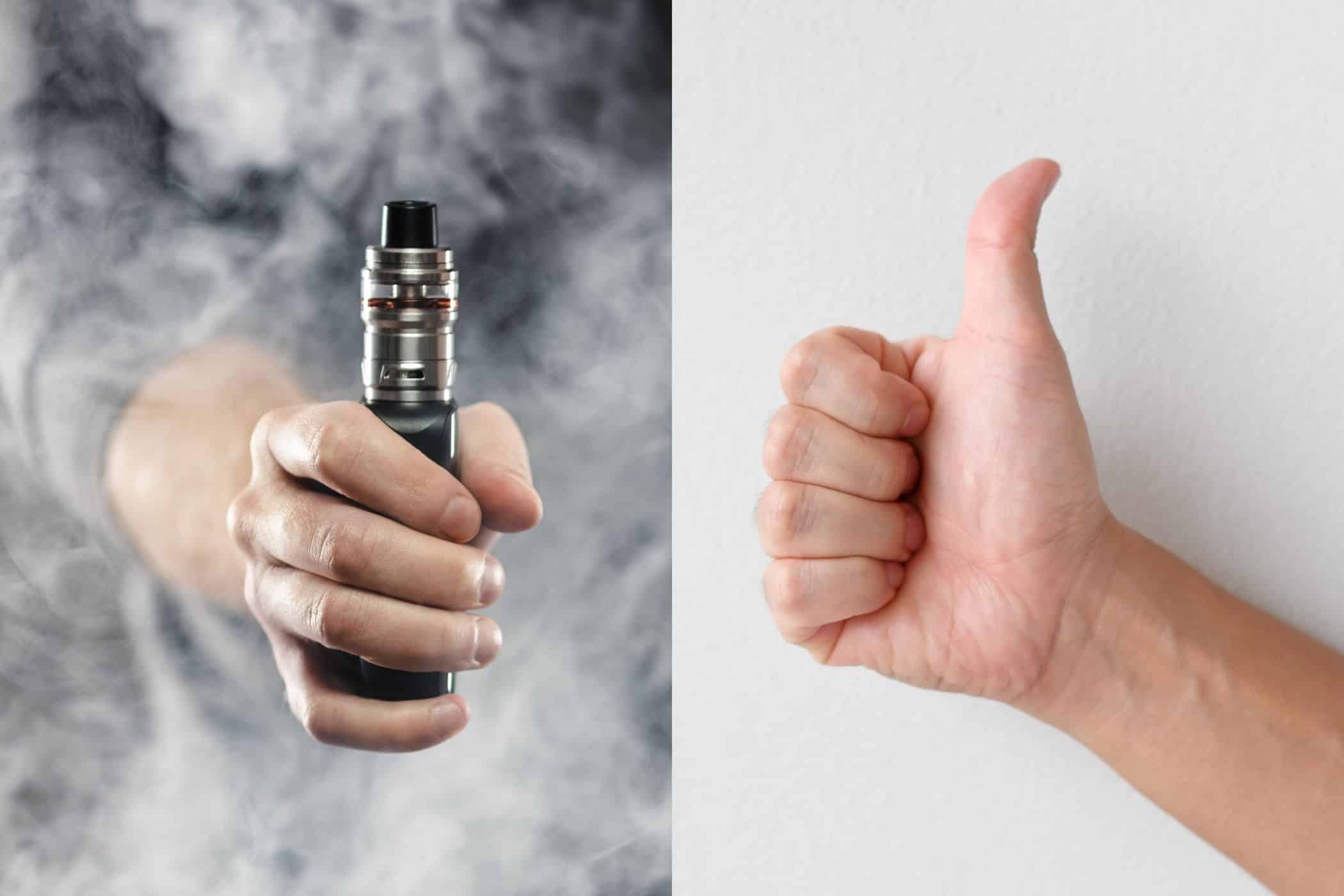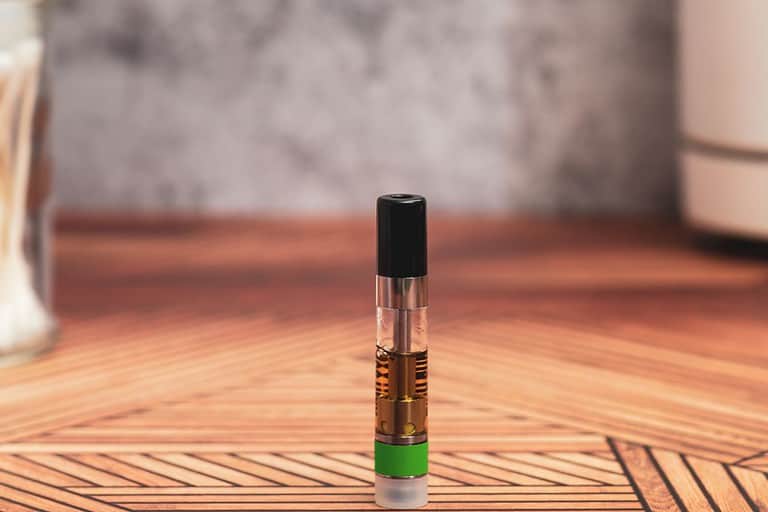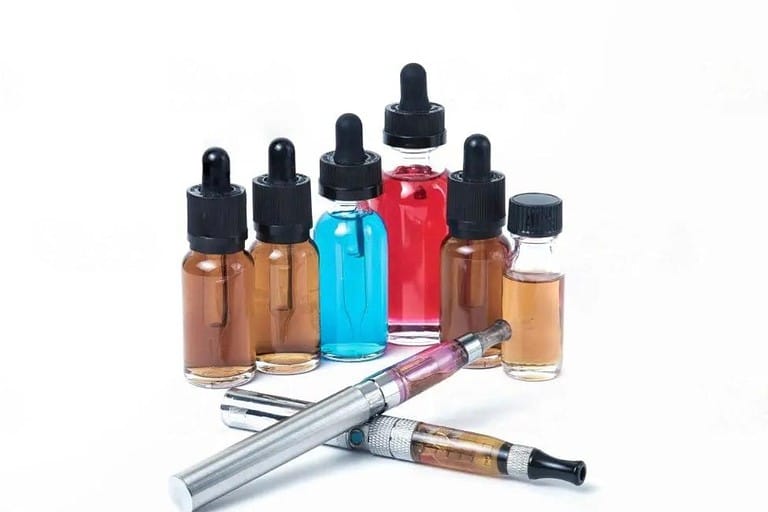10 Benefits of Vaping: Unveiling the Upsides for Informed Choices
As the debate around e-cigarettes continues, it’s crucial to consider the potential benefits of vaping, particularly in comparison to traditional smoking. E-cigarettes can offer a technology-driven alternative with certain advantages. Understanding these benefits may inform your personal choices or contribute to broader discussions on public health policies.
Vaping is often addressed as a less harmful option than smoking. This stems from the fact that e-cigarettes do not burn tobacco, a process that releases thousands of chemicals, many of which are toxic. Instead, e-cigarettes work by heating a liquid to generate an aerosol that can be inhaled. Transitioning from smoking to vaping might lead to improvements in your sense of smell and taste, as well as to a reduction in the number of harmful chemicals you inhale.
NEW CUSTOMER DISCOUNT
Save 15%
15% OFF YOUR ENTIRE ORDER FOR NEW CUSTOMERS USE CODE WELCOME15!

Moreover, vaping can play a role as a smoking cessation tool. While quitting smoking cold-turkey is challenging for many due to nicotine addiction, e-cigarettes can provide the nicotine that smokers crave without many of the other harmful substances found in tobacco smoke. This method of nicotine delivery might ease the transition and help reduce smoking rates, which is a significant public health goal.
Table of Contents
Comparative Health Aspects

When you compare vaping to traditional smoking, two significant health aspects stand out: the reduction of harmful chemicals you are exposed to and a lower associated risk of cancer and disease.
Reduction of Harmful Chemicals
Traditional tobacco cigarettes contain over 7,000 chemicals, many of which are toxic. By switching to vaping, you significantly reduce your intake of these harmful substances. E-cigarette vapor typically contains fewer toxins and lower levels of nicotine, providing a less harmful alternative. Here’s a clear comparison:
- Tobacco Smoke: Tar, carbon monoxide, arsenic, and benzene.
- E-Cigarette Vapor: Nicotine (often lower levels), propylene glycol, vegetable glycerin, and various flavoring substances.
Lower Risk of Cancer and Disease
While no activity involving nicotine can be deemed entirely risk-free, vaping presents a considerably lower risk profile compared to smoking. Research suggests that vaping may lead to a decrease in smoking-related diseases like cancer, cardiovascular disease, and chronic obstructive pulmonary disease. The absence of combustion in vaping reduces your exposure to many carcinogens found in cigarette smoke, which directly diminishes your overall risk for these health problems.
For instance, consider the risk of lung injuries. Cigarette smoke is often associated with lung injuries and long-term lung damage. In contrast, vape vapor, while not harmless, contains fewer of the toxic substances that contribute to such conditions, making it a safer alternative for those looking to reduce their health risks related to smoking.
Nicotine and Addiction Management
| Aspect | Nicotine and Addiction Management through Vaping |
|---|---|
| Nicotine Delivery | Vaping provides a method for controlled nicotine delivery, allowing users to choose nicotine levels and potentially taper down over time. |
| Gradual Reduction | Users can gradually reduce nicotine levels in e-liquids, aiding in addiction management by easing the transition to lower nicotine concentrations or even nicotine-free options. |
| Alternative Nicotine Sources | Various nicotine products, including nicotine replacement therapies (NRTs) and vape products, can serve as alternatives to traditional smoking for those seeking to quit. |
| Behavioral Replacement | Vaping simulates the hand-to-mouth action associated with smoking, providing a behavioral replacement that can aid in managing the psychological aspects of addiction. |
| Customization | Vaping allows users to customize their experience, potentially making it a more tailored and satisfying method for individuals trying to quit smoking. |
| Reduced Harm Perception | While not risk-free, vaping is generally considered less harmful than smoking, which might encourage smokers to switch to a less harmful alternative. |
| Accessibility and Availability | Vape products are widely available, making them accessible to individuals seeking alternatives to traditional smoking for addiction management. |
| Support Resources | Some individuals find support in online communities, forums, and cessation programs specifically designed for those using vaping as a smoking alternative. |
| Regulatory Environment | Vaping is subject to evolving regulations; adherence to local laws and regulations is crucial for responsible and safe use. |
| Potential for Dual Use | Some individuals may use both traditional cigarettes and vaping products, leading to dual use, which may hinder effective addiction management. |
| Long-Term Health Impact Uncertainty | While vaping is generally considered less harmful than smoking, the long-term health effects are not fully understood, and ongoing research is essential. |
Managing your nicotine addiction effectively can be a complex process, but vaping can offer a means to control nicotine intake and support smoking cessation efforts. Specific strategies enable you to approach quitting with more control over your addiction.
Controlling Nicotine Intake
Vaping allows you to modulate the amount of nicotine you consume. By selecting e-liquids with varying nicotine concentrations, you can incrementally decrease your nicotine intake at a pace that’s comfortable for you, potentially reducing withdrawal symptoms. This personalized approach to reducing nicotine levels can help manage the addictive aspects of nicotine consumption.
Aiding Smoking Cessation
A significant benefit of vaping for many people is its role in smoking cessation. Transitioning from traditional cigarettes to vaping can be a step toward quitting smoking. It mimics the physical act of smoking, which can satisfy behavioral habits while you work on reducing nicotine dependency. Studies like those found in the research “Current advances in research in treatment and recovery: Nicotine addiction” suggest that vaping may represent harm reduction compared to smoking traditional cigarettes, and “QuitNic: a pilot randomized controlled trial” supports the idea that vaping products can aid smoking cessation in specific settings.
Public Health and Regulation
In the realm of vaping, public health and regulation are intertwined, primarily due to the increased usage among youth and the concerns over long-term health effects. Regulatory authorities like the FDA and CDC actively work to balance the potential benefits of vaping for adult smokers with the need to prevent negative impacts on young populations.
FDA and CDC Involvement
The U.S. Food and Drug Administration (FDA) and Centers for Disease Control and Prevention (CDC) play pivotal roles in shaping the public health landscape of vaping. These agencies conduct research, enforce regulations, and issue guidelines aimed at protecting you, especially if you’re an adult smoker looking for alternatives to traditional cigarettes. Initiatives like the National Youth Tobacco Survey guide their strategies by providing valuable data on usage patterns among high school students and young adults.
Impact on Youth and Young Adults
Your awareness of vaping’s impact on youth and young adults is crucial. The statistics are startling; the National Youth Tobacco Survey reveals a notable prevalence of e-cigarette use among high school students. As a result, the FDA has proposed strict regulations to limit the appeal of vaping products to young people, focusing on flavors and marketing practices that are thought to entice this demographic. This concern extends to public health entities ensuring that the transition of adult smokers to vaping does not inadvertently encourage youth to begin using nicotine products.
Vaping Technology and Experience

When you explore the world of vaping, you’ll find a range of devices and flavors that cater to an individualized experience. From sleek vape pens to robust mods, the technology behind these devices is designed to enhance the sensation and pleasure of vaping.
Variety of Vaping Devices
Starter Kits: As someone new to vaping, you’ll often begin with a starter kit. These kits provide everything you need in one package, including a vaping device, a charger, and often, pre-filled e-liquid cartridges. They’re convenient and easy to use, making them an excellent choice for beginners.
Build Your Own Coils: If you desire a more hands-on approach, there are options like ‘build your own’ coil systems. These encourage you to tailor the resistance and heating elements to control the vapor output precisely. While this requires more knowledge and skill, it allows for a more fine-tuned vaping experience.
Customization and Flavors
E-Liquids and Flavors: The core of the vaping experience is the e-liquid, a mixture that usually contains nicotine, flavoring, and a base of propylene glycol or vegetable glycerin. You have a plethora of flavor options, from classic tobacco products to exotic fruits and desserts. The ability to choose and even mix flavors is what sets vaping apart from traditional smoking.
Vaping Devices: Different vaping devices cater to tastes in vapor output and flavor intensity. Some, like the compact e-cigarettes, are designed to mimic the look and feel of traditional cigarettes, while more sizeable vape pens and mods offer more power and the ability to customize components like batteries and atomizers.
Remember, the specific device and flavor you choose will greatly impact your vaping experience. Your preference can range from discreet e-cigarettes for low vapor output to advanced setups for more significant vapor production and flavor intensity.
Social Aspects and Lifestyle
As you consider vaping, it’s important to recognize its role in both social experiences and individual lifestyle choices, such as the ease with which you can engage in vaping and the changing perceptions around its use.
Convenience and Accessibility
Vaping presents a level of convenience unmatched by traditional tobacco products. Unlike cigarette smoke, which often requires designated smoking areas, many find that the use of e-cigarettes offers more flexibility. Public spaces that prohibit smoking may still allow vaping, reflecting guidance from institutions like Public Health England, which acknowledges the reduced harm of e-cigarettes compared to smoking tobacco. Vaping devices are also generally more accessible; you can carry them without the need for extra accessories like lighters or ashtrays.
Cultural Shift and Stigma
The culture around nicotine consumption is experiencing a shift, primarily influenced by the introduction of vaping. While traditional tobacco product use carries a stigma due to health risks and the unpleasant odor of tobacco smoke, vaping is often viewed as a more socially acceptable alternative. This shift is influenced by a broader cultural understanding that vaping might be a less harmful option, though it’s crucial to note that these perceptions vary widely by region and community. Vaping has developed its own culture and social aspects, often seen as trendy among certain groups, which can impact your social experiences.
Potential Risks and Concerns

When considering vaping, you should be aware of the specific health risks and concerns that are associated with e-cigarettes. Your understanding of these factors is essential to make an informed decision.
Toxic Substances and Contaminants
Contrary to the smoke-free allure of e-cigarettes, the aerosol you inhale can contain toxic substances and harmful contaminants. Tests by the Food and Drug Administration (FDA) have found toxins such as diacetyl, a flavorant linked to a serious disease called bronchiolitis obliterans, also known as “popcorn lung.” Moreover, propylene glycol, a common ingredient, can decompose into propylene oxide, a known carcinogen when vaporized at high temperatures.
Research has indicated that these aerosols may also contain metals like lead, nickel, and tin, which could cause respiratory issues, including asthma and chronic obstructive pulmonary disease (COPD). If you’re considering vaping as an alternative to smoking, it’s crucial to acknowledge these potential chemical exposures.
Dangers of Improper Use
The risk of lung injury also increases with improper use of vaping devices. Notably, there was an outbreak of e-cigarette or vaping use-associated lung injury (EVALI), strongly linked to vitamin E acetate, an additive in some THC-containing e-liquids. Although vaping is sometimes viewed as a safer alternative to traditional smoking, instances of lung injuries and even deaths related to vaping have challenged this perception.
In addition to the risks from additives like vitamin E acetate, incorrect handling or modification of vaping devices can lead to accidents, including burns and explosions. These dangers, coupled with varying price points and inconsistent legal regulations, make the health risks of vaping a significant concern, particularly for those considering it as a smoke-free alternative.
Vaping Advantage Assessment
When examining the potential benefits of vaping, it’s crucial to consider both economic and environmental implications compared to traditional smoking methods. Your understanding of these aspects can help in making an informed decision about vaping.
Comparing Costs and Savings
In terms of finances, the initial cost of buying a vaping device may be higher, but over time, vaping can be less expensive than buying tobacco cigarettes. Here is a simple breakdown to illustrate:
| Cost Factor | Vaping | Tobacco Cigarettes |
| Initial Investment | Higher for the device | None |
| Recurring Expenses | Lower for e-liquids | Higher for packs |
| Maintenance | Minimal | None |
You’ll typically spend more upfront for a vape device, but the ongoing costs of e-liquids or replacement cartridges are often lower than the continuous purchase of tobacco cigarette packs. Also, if you engage in dual use—both vaping and smoking—it’s likely that no cost benefit will be realized, as you are maintaining two habits.
Evaluating the Environmental Impact
While the environmental impact of vaping is not entirely without consequences, it is generally considered to be less harmful than the impact of regular cigarettes. Tobacco smoke produces thousands of chemicals, including toxic substances like volatile organic compounds (VOCs), heavy metals, and other toxins that pollute the air and contribute to a range of health issues.
On the contrary, vaping produces fewer pollutants and requires less farming land and water to produce. This means reduced deforestation, chemical runoff, and litter compared to the tobacco industry’s impact. However, it is essential to properly dispose of vaping products as they can contain batteries and plastics, which have environmental consequences if not recycled appropriately.
Frequently Asked Questions
Before exploring these FAQs, it’s important for you to understand that the information provided addresses common inquiries regarding the benefits of vaping, especially as they compare to traditional smoking, with a focus on health aspects.
What are the potential health advantages of vaping compared to smoking?
Vaping is generally associated with fewer harmful chemicals than traditional cigarettes. Research suggests it may be a less damaging option due to the lack of smoke inhalation.
Can switching to vaping aid in lung function recovery?
Transitioning from smoking to vaping may improve your lung function due to the reduction in exposure to the tar and toxins found in cigarette smoke that can impair lung health.
Does vaping offer any benefits for managing stress and mental health?
Some individuals find vaping can offer stress relief, similar to the act of smoking, but with potentially reduced health risks. However, the impact of vaping on mental health varies and should be considered with caution.
What positive impacts on health can nicotine have when consumed through vaping?
Nicotine delivered through vaping may have less impact on cardiovascular health compared to smoking, as it does not involve the inhalation of smoke and tar, which are known to exacerbate heart conditions.
Are there any significant benefits of vaping for long-term smokers?
Long-term smokers may experience a reduction in smoking-related health issues when they switch to vaping, as it eliminates the combustion process and the resultant inhalation of cigarette smoke.
How does vaping differ from traditional smoking in terms of health risks?
Vaping does not produce tar or carbon monoxide, two of the most harmful elements in tobacco smoke. It also significantly reduces the exposure to a myriad of combustion-related toxins, supporting a perspective of reduced risk in comparison to conventional smoking.







